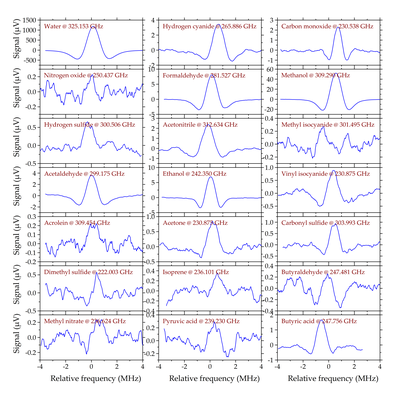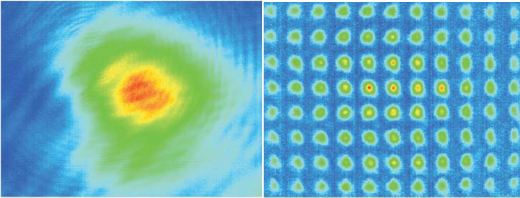High-Sensitivity and High-Specificity Breath Gas Sensor Based on Molecular Spectroscopy in the Millimeter-Wave Range
The analysis of human breath has a large medical potential because it contains several hundreds of volatile organic compounds (VOCs) that can be attributed to certain physiological processes and pulmonary as well as non-pulmonary diseases (e.g. chronic obstructive pulmonary disease (COPD) and diabetes, respectively). Besides, it is inherently safe and non-invasive. Major VOCs in the exhaled air of a healthy human are e.g. isoprene, acetone, ethanol, and methanol. However, since the concentrations of VOCs in the breath are in the ppm to ppb range, the analysis is technically challenging and common devices are bulk, expensive, difficult to handle and limited in specificity.
The project aims to develop a novel sensor for breath analysis with high sensitivity and high specificity. It is based on a millimeter-wave (mmW) heterodyne gas spectrometer in the frequency range from 220 - 270 GHz, where many VOC molecules have spectral fingerprints due to rotational transitions. The mmW transmitter and receiver with integrated on-chip antennas are fabricated in SiGe technology by the project partner Leibniz-Institut für Innovative Mikroelektronik (IHP) in Frankfurt/Oder. The mission of the Humboldt-Universität zu Berlin is the integration and evaluation of the sensor system and the analysis of the measured spectra by a multivariate data analysis. Finally, the project partner Universität Marburg will evaluate the breath analysis sensor in a medical environment.
The project is funded by the Deutsche Forschungsgemeinschaft (DFG) within the ESSENCE (Electromagnetic Sensors for Life Sciences) program.


Figure: Detection of various VOCs in human breath samples by mmW spectroscopy (Rothbart et al., "Analysis of Human Breath by Millimeter-Wave/Terahertz Spectroscopy," Sensors, vol. 19, no. 12, 2019, doi: 10.3390/s19122719.)
Contact: N. Rothbart
